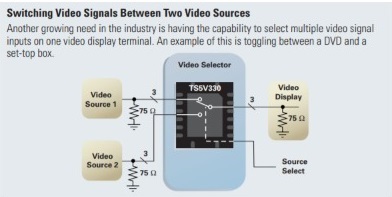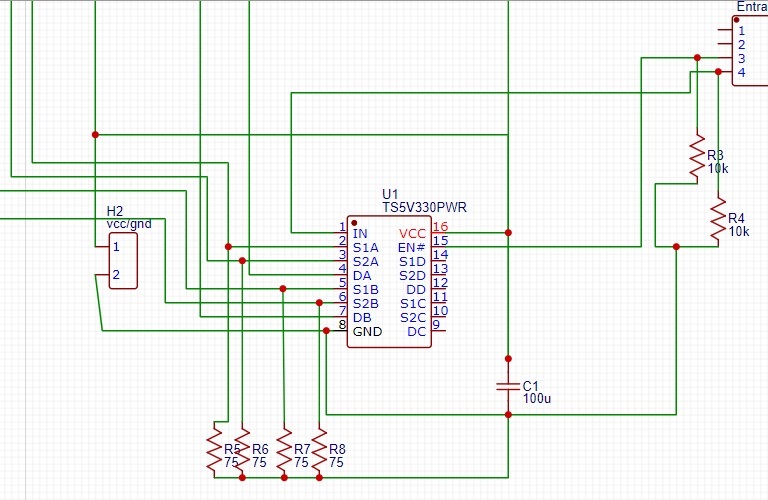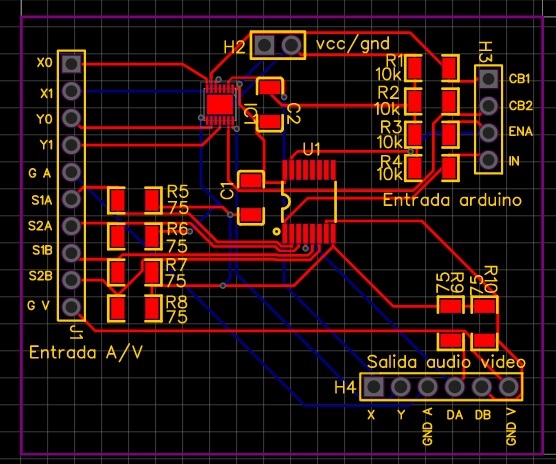Hello, I am designing a PCB usign in part of it the ts5v330, however i am not sure if i can use it directly with the video signal from RCA STB thru this IC to the output for a TV, i found a PDF mentioning a 75 Ohm resistor in parallel to the input and output, is it correct? should I add this resistor to each input and to the output if i am using a RCA signal from a STB? also do you recomment use a desacopling capacitor between VCC and GND?
-
Ask a related question
What is a related question?A related question is a question created from another question. When the related question is created, it will be automatically linked to the original question.




